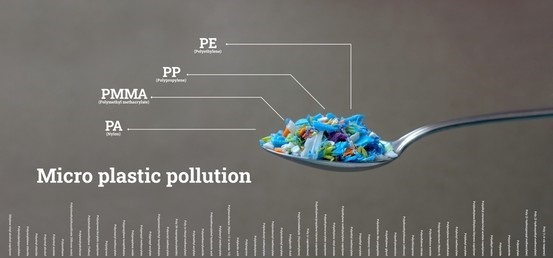Microplastics (MPs), generally plastic particles less than 5 mm in size, are synthetic organic polymers widely used in packaging materials, construction, automotive parts, and agricultural materials because they are lightweight, inexpensive, and easy to process. Still, they are also emerging environmental pollutants because of their properties.
Microplastics can cause great harm to aquatic organisms by blocking and disrupting their digestive systems. They can also potentially harm human health through the food chain, as well as being a potential pathway for the transfer of toxic organic compounds and heavy metals to aquatic organisms.

Therefore, detecting microplastics in water is very important. Lifeasible has established standardized analytical methods to analyze a variety of microplastics in water, including acrylonitrile-butadiene-styrene (ABS), polyamide (PA), polyethylene terephthalate (PET), polypropylene (PP), polystyrene (PS), polyvinyl chloride (PVC), and poly (methyl methacrylate) (PMMA), etc.
Once the aqueous sample is obtained, Lifeasible pre-treats the sample to eliminate a large number of impurities and organic substances that interfere with the detection process. We commonly use acid digestion, alkali digestion, oxidative digestion, enzymatic digestion, and other digestion methods in the digestion of water samples.
| Types | Methods | Features |
| Acid digestion | Nitric acid (HCl) | High efficiency |
| Hydrochloric acid (HNO3) | ||
| Alkali digestion | Potassium hydroxide (NaOH) | High digestion rate for animal soft tissue, high sample recovery |
| Sodium hydroxide (KOH) | Good digestion, high sample recovery | |
| Oxidative digestion | Hydrogen peroxide (H2O2) | High efficiency, almost no effect on polymer |
| Fenton's reagent | High digestion rate | |
| Enzymatic digestion | Low hazard, no effect on polymers | |
| Other digestion methods | Microwave | Improved acid digestion efficiency |
| Ultrasound | Good in combination with other methods | |
| Sodium hypochlorite | Effective in decomposing fish stomach contents | |
Lifeasible in the analysis of the general use of visual detection, spectroscopic analysis, and thermal analysis of various methods can be used to identify the detection of microplastics in water samples.
| Methods | Features |
| Visual detection | Fast, convenient, and easy to use |
| Focal-plate-array Fourier transform infrared (FPA-FTIR) | Can detect large areas of microplastics, no pre-screening required |
| Raman spectroscopy | A non-destructive detection method with a wider spectral range, detecting microplastics down to 1 μm |
| Scanning electron microscopy (SEM) and energy-dispersive X-ray spectroscopy (EDS) | Detects the constituent elements of microplastics and obtains ultra-clear images |
| Thermogravimetric analysis (TGA) and differential scanning calorimetry (DSC) | Simple operation and small sample size required |
| Pyrolysis-gas chromatography/mass spectrometry (Py-GC/MS) | No additional solvent is required to avoid background contamination |
| Extraction-thermal desorption-gas chromatography/mass spectrometry (TED-GC/MS) | This method can handle samples up to 100 mg and is not affected by degradation due to heating so it can be used for complex samples with large sample volumes. |
When testing microplastics, Lifeasible takes strict quality assurance and quality control measures throughout the process to improve data quality. Of course, it is also critical that you obtain representative samples in the field sampling to assess the abundance of microplastics in the study area accurately. So if you are unsure about the sample, please contact our staff promptly, and you will get a suitable solution to match the subsequent testing and analysis work and get accurate analysis results.
Lifeasible has established a one-stop service platform for plants. In addition to obtaining customized solutions for plant genetic engineering, customers can also conduct follow-up analysis and research on plants through our analysis platform. The analytical services we provide include but are not limited to the following:
Get Latest Lifeasible News and Updates Directly to Your Inbox
Adaptive Evolutionary Mechanism of Plants
February 28, 2025
Unraveling Cotton Development: Insights from Multi-Omics Studies
February 27, 2025